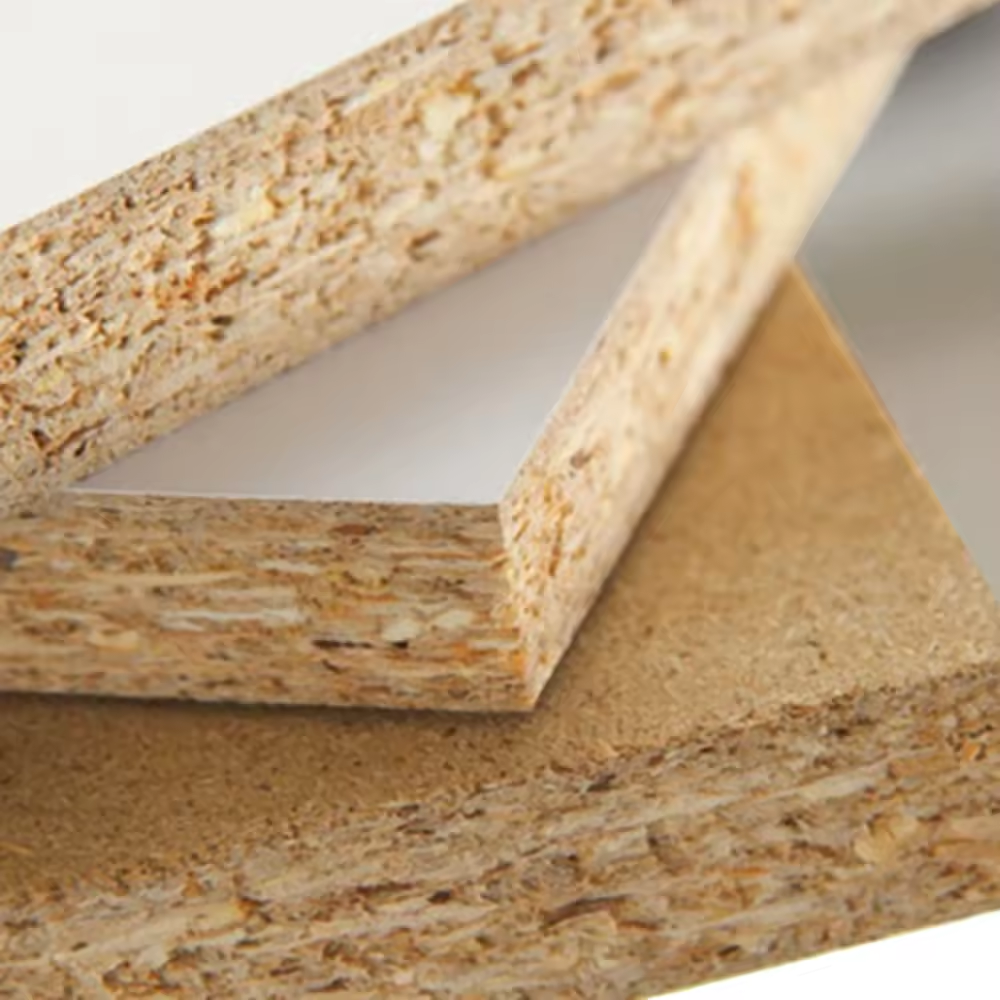How to judge the quality of particleboard?
The quality of particleboard can be comprehensively evaluated from multiple aspects. High-quality particleboard should have good density, strength, stability and environmental protection. Here are some common ways to judge the quality of particleboard:
1. Appearance inspection
Surface flatness: The surface of high-quality particleboard should be smooth and flat, without obvious cracks, bubbles or other defects. There should be no large dents, warping or irregular textures on the surface.
Color consistency: The color of the particleboard should be uniform and consistent, and there should be no obvious color difference. Excessive color difference may indicate that wood from different sources is used, affecting the overall quality of the board.
No obvious defects: If there are exposed particles, cracks, missing corners, and damage on the particleboard, these are usually caused by improper workmanship during the manufacturing process, indicating that the quality of the board is poor.
2. Density and hardness
Density test: The density of particleboard is a key indicator for evaluating its strength. Particleboards with higher density are generally stronger and more durable. The density can be roughly judged by feel, and particleboards with higher density are generally heavier.
Hardness test: Particleboards with higher hardness can effectively resist external impact and are not easy to deform or damage. You can press the board surface gently with your fingers to feel its hardness. Poor-quality particleboards usually feel soft or easy to dent.
3. Odor and environmental protection
Formaldehyde emission: The environmental protection of particleboard is an important indicator. Poor-quality particleboards usually release more formaldehyde, resulting in pungent odors. High-quality particleboards meet environmental protection standards, such as E0, E1, etc., and have low formaldehyde emission. You can detect whether there is a pungent odor by smell, or ask the manufacturer to provide an environmental certification certificate.
Odor intensity: Even for new boards, the smell of formaldehyde should not be too strong. If there is a strong chemical odor, it may mean that inferior glue or other harmful substances are used.
4. Structure and uniformity
Particle uniformity: Check the cross-section of the particleboard to see if the particles are evenly distributed. High-quality particleboards should have a uniform distribution of particles to avoid local areas that are too dense or too loose. Particles that are too coarse or too large will also affect the strength of the board.
Gluing: The glue of the particleboard should be uniform and firm. By observing the cross section, check whether there are obvious traces of glue or loose particles.
5. Strength and load-bearing capacity
Bending strength: High-quality particleboard has strong bending strength and can withstand large loads without breaking easily. You can gently bend the board by hand to check whether there are abnormal bends or cracks.
Impact resistance: You can gently hit the particleboard with a heavy object to check whether it is easy to crack or break. High-quality particleboard should have good impact resistance.
6. Size and thickness
Dimension accuracy: The size of the particleboard should meet the standard requirements and there should be no obvious size deviation. Excessive size deviation will affect the splicing effect and overall appearance during use.
Thickness uniformity: High-quality particleboard should have uniform thickness, whether it is a whole board or a cut edge, the thickness should meet the specified standards. You can use a caliper or a ruler to measure whether the thickness of the board is consistent.
7. Moisture content
Moisture content: Too high moisture content of particleboard will cause the board to expand and deform, so it is necessary to maintain an appropriate moisture content. Generally speaking, the moisture content of particleboard should be controlled between 8% and 12%. Boards with too high a moisture content are prone to deformation, while too low a moisture content may cause the board to become more brittle.
8. Wear resistance and durability
Surface wear resistance: The surface of particleboard should not be easily scratched or worn. You can gently scratch the surface with a hard object to see if the particleboard easily leaves obvious marks. Particleboard with poor wear resistance will affect its service life.
Moisture resistance: Particleboard will swell or deform when it is damp, so high-quality particleboard should have a certain degree of moisture resistance. Moisture resistance can be evaluated by observing its moisture content or testing it for a period of time in a humid environment.







